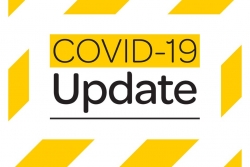Academics and teachers are warning a new mandatory NCEA literacy and numeracy test could be too tough for some teens.
The Ministry of Education recently unveiled draft versions of new standards students will have to pass in order to get any NCEA qualification from 2023.
The standards were developed after testing for the Tertiary Education Commission found 40 percent of teens with NCEA level 2 failed a basic adult literacy and numeracy test.
The associate dean of education (academic) at Victoria University, Dr Michael Johnston, worked on the study for the commission and also advised the ministry on the new standards, which he said would be an improvement.
“It sets a benchmark at an appropriate level,” Johnston said.
“The NCEA literacy requirement that we have at present did a very poor job of certifying the level of literacy that is required to be a fully functional citizen in the 21st century and I think that the new requirement is far better in that regard.”
But he warned the new requirements would not of themselves fix the problem of poor literacy and numeracy when they became mandatory in 2023.
“There will be some young people coming through for whom there won’t be time to get them up to scratch,” he said.
“There need to be some fairly urgent moves to address literacy teaching in the younger years.”
The draft literacy standards worth five credits each were: being able to read to make sense of written texts, read for different purposes, and read with critical awareness; and writing texts to communicate ideas and information.
The 10-credit draft numeracy standard would require students to use maths and statistics to meet the numeracy demands of a range of situations.
The new standards were likely to be assessed through a test administered by NZQA.
The current requirement is also for 10 literacy and 10 numeracy credits, but they could be obtained by completing NCEA standards in subjects considered literacy or numeracy-rich.
The associate dean (research) for the Faculty of Education and Social Work at the University of Auckland, Dr Aaron Wilson, said employers and tertiary institutes wanted assurance young people with an NCEA qualification could read and write well enough to do their jobs or pursue further study.
Wilson said the new benchmarks looked like they would be an improvement, because students would be assessed by a specific test, rather than allowing them to meet the requirement by completing achievement standards that included literacy or numeracy but could be from a variety of subject areas.
“It’s mainly because the literacy requirement at the moment is an indirect assessment of reading and writing and this will be a direct assessment of reading and writing, and I think therefore it will give a more accurate picture of what kids can do,” he said.
Wilson said more students might fall short.
“There is a risk that if you raise the requirement for literacy and it’s a requirement to gain an NCEA [qualification] then some of the NCEA figures that we have at the moment could potentially come down,” he said.
The vice-president of the Association for the Teaching of English, Pip Tinning, said some students would find the standards difficult if they were in force now.
“They are definitely challenging,” she said.
Tinning said international tests showed literacy rates had been declining and some schools might need to focus more explicitly on literacy teaching in all curriculum areas, not just English, once the standards were introduced.
“We should be, and we are, teaching literacy and it should be underpinning a fair amount of what our teaching and learning is anyway. I think it makes it a lot clearer what that should look like.”
Waimea College principal Scott Haines said the draft standards covered a broader range of literacy and numeracy skills than the current minimum requirements.
“At the moment, the standards have a much narrower focus than what is being proposed,” he said.
“So our view is that if you are achieving those standards that should mean that your foundational literacy and numeracy skills are stronger.”
Haines said the draft standards were set at levels four and five of the curriculum, which aligned with Year 9-10 of schooling.
He said a lot would depend on the tests and questions used to assess the standards.
The Ministry of Education’s website advised teachers and principals to start thinking about supporting literacy and numeracy.
It said students could sit the standards from Year 9 and they would become mandatory from 2023 “as long as the sector is ready”.
It said consultation on the draft standards would close on 18 December.
Source: RNZ News – www.rnz.co.nz























































-helped-regain-her-strength-and-balance-using-Nymbl-after-a-fall.-660x440.jpg)


